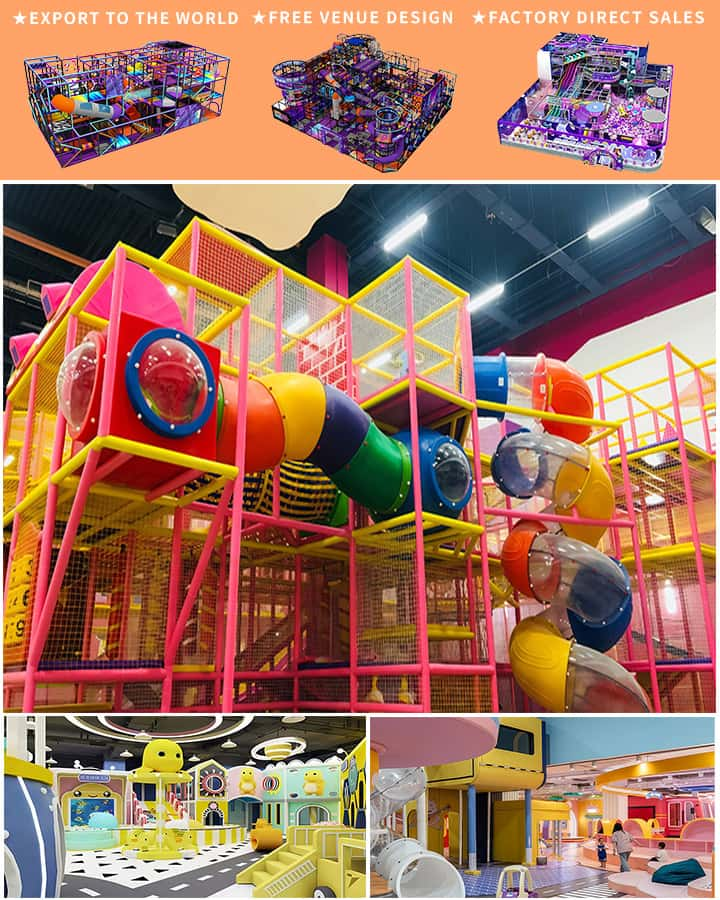Preschool education plays an indispensable role in a child’s early development, and playground equipment tailored for children aged 3 to 5 is integral to this foundational learning experience. These formative years are crucial for the physical, cognitive, and social-emotional growth of preschoolers. By incorporating well-designed playground equipment into educational settings, educators can create enriching environments that promote holistic development and set the stage for lifelong learning.
Physical Development: Building Strong Bodies
Physical activity is essential for young children’s growth and development. Playground equipment designed for preschoolers helps improve their motor skills, coordination, balance, and strength. Elements such as small slides, low climbers, and seesaws offer opportunities for children to engage in active play while developing their gross motor skills. For instance, climbing on a jungle gym or scaling small steps not only enhances muscle strength but also boosts confidence as children navigate different heights and surfaces.
Balance beams and mini-obstacle courses are particularly beneficial for developing fine motor skills and hand-eye coordination. These activities encourage preschoolers to focus and control their movements, which is vital for tasks like writing and drawing they will encounter in later stages of education. Furthermore, incorporating simple, safe elements such as soft flooring materials reduces the risk of injury, ensuring a secure environment for exploration and play.
Cognitive Growth: Learning Through Play

Play is often referred to as the “work” of children, and playground equipment serves as powerful tools for cognitive engagement. Interactive elements, such as musical instruments built into playground structures or tactile panels with varied textures, stimulate curiosity and sensory exploration. Children learn about cause and effect by pressing buttons or pulling levers, fostering critical thinking and problem-solving skills.
Educational installations, such as alphabet or number-themed play areas, introduce basic literacy and numeracy concepts in a fun and accessible manner. Storytelling corners with themed playhouses and puppet theaters encourage imaginative play, which is crucial for language development and comprehension. Through these interactive experiences, preschoolers begin to form connections between abstract ideas and tangible actions, laying the groundwork for more complex cognitive processes.
Social and Emotional Development: Building Blocks of Relationships
One of the most significant benefits of playground equipment is its ability to facilitate social interaction among young children. Group activities on structures like merry-go-rounds, sandboxes, and collaborative play sets teach essential social skills such as sharing, cooperation, and empathy. When children play together, they learn to negotiate roles, resolve conflicts, and develop friendships—skills that are fundamental for their social development.
Sensory-rich playgrounds, complete with water tables, sand pits, and nature-inspired elements, provide opportunities for emotional expression and regulation. Engaging with various textures and materials can be calming or invigorating for children, helping them understand and manage their emotions. Educators can support this process by guiding children through conversations about their feelings during playtime, thereby promoting emotional intelligence.
Safety and Inclusiveness: Designing for All
Safety is paramount when designing playgrounds for preschoolers. Equipment should be age-appropriate and constructed with non-toxic materials to ensure a healthy environment. Surface materials must be soft yet durable enough to cushion falls and prevent injuries. Additionally, playground layouts should allow clear sightlines for caregivers and educators to monitor activities effectively.
Inclusivity is another critical consideration. Playground designs should accommodate children of all abilities, providing ramps, transfer stations, and adaptive swings where necessary. Sensory-rich zones and quiet spaces benefit children who may need a break from the sensory overload of traditional play areas. By fostering an environment where every child feels welcome and can participate fully, preschool playgrounds become true community hubs.
Conclusion
In conclusion, playground equipment for preschoolers aged 3 to 5 is more than just a place for fun; it is a vital component of early childhood development. Through carefully selected and thoughtfully designed equipment, educators can nurture physical health, stimulate cognitive growth, and support social-emotional learning. By investing in high-quality playground infrastructure, we lay a strong foundation for the future, ensuring that our youngest learners thrive in a safe, inclusive, and enriching environment.




